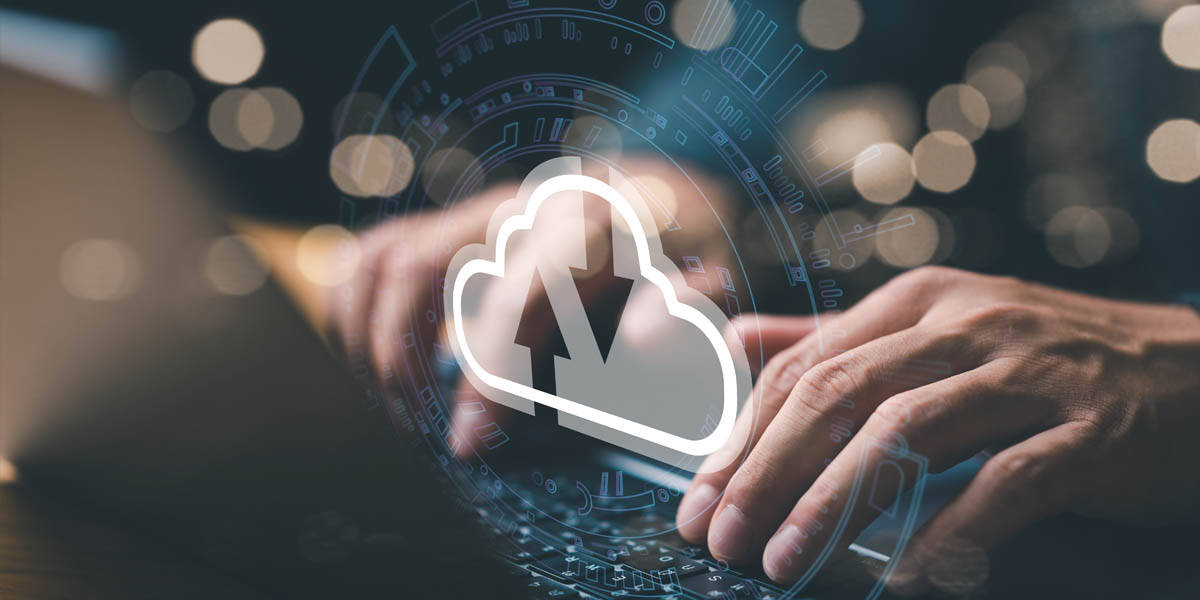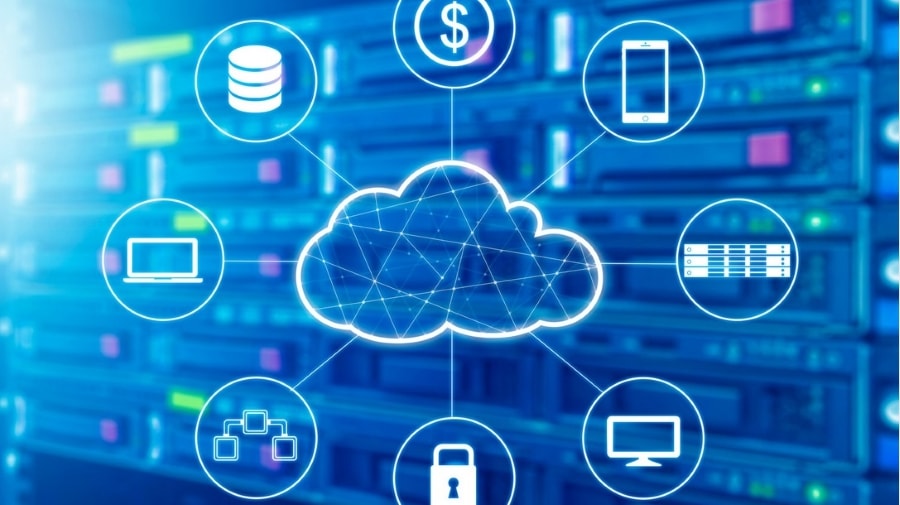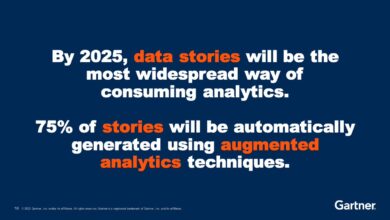
Cloud Security That Performs A Deep Dive
Cloud security that performs isn’t just about ticking boxes; it’s about building a robust, responsive system that proactively protects your data and applications. We’re talking about security that’s not a bottleneck, but a seamless part of your cloud infrastructure – a silent guardian, always vigilant, never slowing you down. This post explores the key elements of high-performing cloud security, from choosing the right technologies to establishing effective monitoring and response strategies.
We’ll dissect the critical components that distinguish effective cloud security from solutions that fall short. Think real-world examples, practical strategies, and a peek into the future of this ever-evolving field. Get ready to optimize your cloud security posture and transform it from a potential liability into a powerful asset.
Defining “Cloud Security That Performs”

Cloud security that performs isn’t just about having security measures in place; it’s about having a robust, proactive, and efficient system that seamlessly integrates with your cloud infrastructure, minimizing disruption and maximizing protection. It’s about anticipating threats, responding swiftly, and continuously adapting to the ever-evolving landscape of cyberattacks. This means going beyond basic compliance and actively working to prevent breaches and data loss.
High-performing cloud security relies on several key components working in harmony. These include comprehensive threat detection and response capabilities, robust access control mechanisms, data loss prevention strategies, secure configuration management, and continuous monitoring and auditing. Effective solutions are also adaptable, scalable, and integrated into the broader IT ecosystem. The ability to quickly identify and remediate vulnerabilities is paramount, along with the capacity to learn from past incidents and improve future security posture.
Key Components of High-Performing Cloud Security
Effective cloud security is multifaceted. It’s not a single solution, but rather a combination of strategies and technologies. These components must work together seamlessly to provide comprehensive protection. A weak link in any one area can compromise the entire system.
- Threat Detection and Response: This involves leveraging advanced technologies like Security Information and Event Management (SIEM) systems, intrusion detection and prevention systems (IDS/IPS), and threat intelligence feeds to identify and respond to security threats in real-time. This includes automating responses to minimize human intervention time.
- Access Control: Implementing strong access control measures, including multi-factor authentication (MFA), role-based access control (RBAC), and least privilege access, is crucial to prevent unauthorized access to sensitive data and resources. Regular access reviews ensure only authorized personnel maintain access.
- Data Loss Prevention (DLP): DLP solutions monitor data movement to prevent sensitive information from leaving the organization’s control. This includes monitoring email, cloud storage, and other data transfer points.
- Secure Configuration Management: This involves establishing and enforcing secure configurations for all cloud resources. Automated tools and regular security assessments are vital to maintain secure configurations and identify misconfigurations promptly.
- Continuous Monitoring and Auditing: Ongoing monitoring and regular security audits are essential to identify vulnerabilities, track security events, and ensure compliance with security policies and regulations. This allows for proactive identification of potential issues before they escalate.
Characteristics of Effective vs. Ineffective Cloud Security Solutions
The difference between effective and ineffective cloud security solutions often boils down to proactive versus reactive approaches and the level of integration with the cloud environment.
| Characteristic | Effective Solution | Ineffective Solution |
|---|---|---|
| Proactive vs. Reactive | Predictive threat modeling, automated vulnerability scanning, and incident response planning. | Relies primarily on reactive measures, such as incident response after a breach. |
| Integration | Seamlessly integrated with cloud platforms and existing security tools. | Works in isolation, requiring manual intervention and data synchronization. |
| Automation | Automates threat detection, response, and remediation processes. | Relies heavily on manual processes, leading to delays and increased risk. |
| Scalability | Scales automatically to meet changing demands and resource requirements. | Struggles to adapt to changes in the cloud environment and increasing workloads. |
Real-World Scenarios Requiring Robust Cloud Security
Numerous real-world scenarios highlight the critical need for robust cloud security. Failing to implement strong security measures can lead to significant financial and reputational damage.
- Data breaches: A compromised cloud environment can lead to the exposure of sensitive customer data, financial information, and intellectual property, resulting in hefty fines and legal repercussions (e.g., the Equifax breach).
- Ransomware attacks: Ransomware attacks can encrypt critical data, disrupting business operations and demanding significant ransoms for decryption (e.g., attacks targeting healthcare providers).
- Compliance violations: Failure to comply with industry regulations, such as HIPAA, PCI DSS, or GDPR, can result in substantial penalties and legal action.
- Insider threats: Malicious or negligent insiders can compromise sensitive data and systems, causing significant damage (e.g., employees with compromised credentials).
Comparison of Cloud Security Approaches
Different cloud security approaches offer varying levels of performance. The optimal approach depends on specific needs and priorities.
| Approach | Response Time | Detection Rate | False Positives |
|---|---|---|---|
| Traditional Security Information and Event Management (SIEM) | Minutes to hours | Moderate | Moderate |
| Cloud Security Posture Management (CSPM) | Near real-time | High (for configuration issues) | Low |
| Extended Detection and Response (XDR) | Seconds to minutes | High | Low to Moderate |
| Cloud Workload Protection Platforms (CWPP) | Near real-time | High (for workload-specific threats) | Low to Moderate |
Key Technologies & Their Role
Cloud security that trulyperforms* relies on a robust ecosystem of interconnected technologies working in harmony. It’s not just about deploying individual tools; it’s about creating a cohesive system that proactively identifies, responds to, and mitigates threats in real-time. This requires a sophisticated understanding of the strengths and weaknesses of various technologies and how they integrate to optimize overall security posture.The effectiveness of cloud security hinges significantly on leveraging several key technologies.
These tools, when implemented correctly and integrated effectively, form a powerful defense against a wide range of cyber threats, from data breaches to sophisticated attacks. Automation and orchestration are paramount in enabling these technologies to function at peak efficiency.
Security Information and Event Management (SIEM) and Security Orchestration, Automation, and Response (SOAR)
SIEM systems collect and analyze security logs from various sources across the cloud environment, providing a centralized view of security events. This aggregated data allows security teams to identify patterns, detect anomalies, and investigate potential threats. However, SIEM alone can be overwhelmed by the sheer volume of data and may lack the ability to automatically respond to threats.
Robust cloud security is paramount, especially when dealing with sensitive data. Building secure applications requires careful planning, and that’s where understanding the development landscape comes in. Check out this insightful article on domino app dev, the low-code and pro-code future , to see how modern development methodologies impact the security of your cloud deployments. Ultimately, a well-architected, secure cloud environment starts with understanding how your applications are built.
This is where SOAR comes in. SOAR automates incident response processes, streamlining workflows and reducing the time it takes to contain and remediate threats. Together, SIEM and SOAR create a powerful combination for proactive threat detection and response. For example, a SIEM might detect unusual login attempts from a specific IP address. SOAR could then automatically block that IP address, initiate a password reset, and notify the security team.
Cloud Access Security Broker (CASB)
CASB solutions provide visibility and control over cloud applications and data accessed by users, both inside and outside the organization. They monitor user activity, enforce security policies, and prevent data loss. CASB tools are crucial for ensuring that sensitive data remains protected, even when accessed through third-party cloud services. A high-performing CASB will leverage advanced techniques like machine learning to detect anomalies and automatically respond to suspicious activity.
For instance, a CASB might detect a user attempting to download a large amount of sensitive data to an unauthorized location and automatically block the download.
Endpoint Detection and Response (EDR)
EDR solutions provide advanced threat detection and response capabilities at the endpoint level (laptops, desktops, servers). They monitor system activity, detect malware, and respond to threats in real-time. In a cloud environment, EDR agents can be deployed on virtual machines and containers, extending protection to the cloud-based infrastructure. High-performing EDR solutions utilize behavioral analysis and machine learning to identify advanced persistent threats (APTs) that traditional antivirus solutions might miss.
An example would be an EDR system detecting unusual process creation or network activity indicative of ransomware and automatically isolating the affected endpoint.
Automation and Orchestration in Cloud Security
Automation and orchestration are essential for maximizing the performance and efficiency of cloud security technologies. Automating repetitive tasks such as vulnerability scanning, patch management, and incident response frees up security teams to focus on more strategic initiatives. Orchestration tools enable seamless integration between different security tools, allowing them to work together effectively. For example, an automated workflow might trigger a vulnerability scan after a new application is deployed to the cloud, and if vulnerabilities are found, automatically initiate a patch deployment.
This level of automation significantly reduces response times and minimizes the risk of security breaches.
Cloud Security Posture Management (CSPM) Tools
CSPM tools continuously assess the security configuration of cloud environments, identifying misconfigurations and vulnerabilities. Different CSPM tools vary in their performance capabilities, particularly in areas such as speed of assessment, accuracy of findings, and the depth of analysis. Some tools offer comprehensive dashboards and reporting, while others focus on specific aspects of cloud security. The choice of CSPM tool should be based on the specific needs and requirements of the organization, taking into account factors such as cloud provider, the complexity of the cloud environment, and the available budget.
For instance, a CSPM tool might highlight misconfigured storage buckets that expose sensitive data, allowing for immediate remediation.
Hypothetical High-Performance Cloud Security Architecture, Cloud security that performs
A high-performance cloud security architecture would integrate SIEM, SOAR, CASB, and EDR tools, all orchestrated through an automation platform. This architecture would leverage machine learning and artificial intelligence for proactive threat detection and response. A robust CSPM tool would continuously monitor the cloud environment for misconfigurations and vulnerabilities. The entire system would be designed for scalability and resilience, ensuring that it can adapt to the ever-changing threat landscape.
This integrated approach would provide comprehensive visibility, automation, and rapid response capabilities, maximizing security performance and minimizing the impact of security incidents.
Addressing Performance Challenges

Cloud security, while crucial, can sometimes become a performance bottleneck. The very tools designed to protect our systems can inadvertently slow them down, leading to user frustration and operational inefficiencies. Understanding and mitigating these performance impacts is key to deploying robust and effective security without sacrificing speed and responsiveness.
Common performance issues arise from the sheer volume of data processed by security tools, the complexity of security policies, and the overhead introduced by various security layers. Inefficiently designed security architectures can amplify these problems, leading to significant latency and reduced overall system performance. This section explores these challenges and offers practical strategies for optimization.
Common Performance Bottlenecks in Cloud Security
Several factors contribute to performance degradation in cloud security. These bottlenecks often manifest as increased latency, higher resource consumption (CPU, memory, network bandwidth), and decreased application responsiveness.
- Intrusion Detection/Prevention Systems (IDS/IPS): Deep packet inspection and signature matching can be computationally intensive, especially with high traffic volumes. Poorly optimized IDS/IPS rules can significantly impact network performance.
- Web Application Firewalls (WAFs): WAFs scrutinize every web request, potentially leading to delays if not properly configured and optimized. Complex rule sets and inefficient processing can create substantial bottlenecks.
- Security Information and Event Management (SIEM) systems: SIEMs collect and analyze massive amounts of security logs from various sources. Inefficient data ingestion, processing, and querying can lead to slow response times and difficulties in real-time threat detection.
- Data Loss Prevention (DLP) tools: Real-time scanning of data for sensitive information can impact application performance, especially if the DLP solution is not optimized for speed and efficiency.
Strategies for Optimizing Cloud Security Processes
Optimizing cloud security processes requires a multi-faceted approach focusing on both the design and implementation of security solutions. The goal is to maximize security effectiveness while minimizing performance impact.
- Right-sizing Security Resources: Deploying appropriately sized virtual machines (VMs) or containers for security tools is crucial. Over-provisioning wastes resources, while under-provisioning leads to performance bottlenecks. Regularly monitor resource utilization and adjust accordingly.
- Efficient Rule Management: Regularly review and optimize security rules. Remove outdated or redundant rules, and prioritize rules based on their criticality. Use the principle of least privilege to minimize the scope of security controls.
- Caching and Pre-processing: Implement caching mechanisms to reduce the processing load on security tools. For example, caching frequently accessed data or pre-processing security logs can significantly improve performance.
- Load Balancing: Distribute the workload across multiple security appliances using load balancing techniques. This helps prevent any single appliance from becoming a bottleneck.
- Microservices Architecture: Adopting a microservices architecture for security solutions can improve scalability and resilience. Individual services can be scaled independently to meet changing demands.
Mitigating the Impact of Security Tools on Application Performance
The impact of security tools on application performance can be minimized by carefully selecting and deploying the right tools, and by optimizing their configuration. This requires a holistic approach, considering both security and performance requirements.
- Choosing Performance-Optimized Tools: Select security tools known for their low overhead and high performance. Look for tools that leverage hardware acceleration or specialized processors for improved efficiency.
- Implementing Parallel Processing: Utilize parallel processing techniques to distribute the security workload across multiple cores or processors. This can significantly reduce processing time.
- Asynchronous Processing: For non-critical security tasks, consider using asynchronous processing to avoid blocking the main application thread. This ensures that security checks don’t impede application responsiveness.
- Fine-grained Access Control: Implement fine-grained access control to limit the scope of security checks. This reduces the number of resources that need to be scanned or monitored.
Best Practices for Managing Security Alerts and Minimizing False Positives
Effective security alert management is crucial for maintaining operational efficiency. A high volume of false positives can overwhelm security teams, leading to alert fatigue and delayed responses to genuine threats. Minimizing false positives is therefore essential.
- Fine-tuning Alert Thresholds: Adjust alert thresholds to reduce the number of false positives. This involves carefully analyzing the alert data and identifying patterns that indicate genuine threats versus benign events.
- Correlation and Contextualization: Correlate security alerts from multiple sources to identify patterns and reduce false positives. Adding context to alerts, such as user location or device type, can help distinguish between legitimate and malicious activities.
- Automation and Orchestration: Automate the response to low-priority alerts to free up security teams to focus on critical issues. Use orchestration tools to automate incident response workflows.
- Regularly Review and Update Security Rules: Regularly review and update security rules to ensure they are effective and accurate. Outdated or poorly configured rules can lead to a high volume of false positives.
Measuring & Improving Performance
Optimizing cloud security isn’t just about implementing controls; it’s about ensuring those controls are effective and don’t negatively impact performance. Measuring and improving the performance of your cloud security posture requires a multifaceted approach, focusing on key performance indicators (KPIs) and continuous monitoring. This allows for proactive identification of bottlenecks and areas needing optimization.Effective measurement provides crucial insights into the effectiveness of your security strategy, allowing for data-driven improvements.
By establishing clear metrics and regularly analyzing performance data, you can pinpoint weaknesses and allocate resources strategically to strengthen your overall security posture. This data-driven approach ensures that your cloud security investments are delivering tangible results.
Key Performance Indicators (KPIs) for Cloud Security
Establishing relevant KPIs is the cornerstone of effective performance measurement. These metrics should reflect the critical aspects of your cloud security strategy, providing a comprehensive view of its effectiveness. Focusing on a few key metrics, rather than an overwhelming number, ensures that you can effectively track progress and identify areas for improvement. Prioritize metrics that directly align with your organization’s security objectives and risk tolerance.
- Mean Time To Detect (MTTD): The average time it takes to identify a security incident. A lower MTTD indicates a more responsive security system.
- Mean Time To Respond (MTTR): The average time it takes to resolve a security incident. A lower MTTR demonstrates efficient incident response capabilities.
- False Positive Rate: The percentage of security alerts that are not actual security incidents. A high false positive rate can lead to alert fatigue and decreased responsiveness to genuine threats.
- Security Control Effectiveness: This measures the percentage of identified threats mitigated by specific security controls. This metric provides insights into the efficacy of individual security tools and processes.
- Compliance Score: Tracks adherence to relevant security standards and regulations (e.g., SOC 2, ISO 27001). This metric is crucial for demonstrating regulatory compliance.
Measuring Cloud Security Tool and Process Performance
Several approaches can be employed to measure the performance of cloud security tools and processes. A combination of automated monitoring and manual review is often the most effective strategy. Remember that consistent monitoring and regular review cycles are essential for maintaining a robust and responsive security posture.
- Automated Monitoring: Utilize built-in monitoring features of security tools, along with third-party monitoring solutions, to automatically collect and analyze performance data. This provides real-time insights into tool performance and potential bottlenecks.
- Performance Testing: Regularly conduct performance tests on security tools and processes to identify areas of weakness and optimize performance. This can involve simulating various attack scenarios to assess the speed and efficiency of the security system’s response.
- Log Analysis: Analyze security logs to identify patterns, trends, and anomalies that might indicate performance issues or security vulnerabilities. This provides valuable historical data for identifying recurring problems and improving future performance.
- Vulnerability Scanning and Penetration Testing: Regularly conduct vulnerability scans and penetration testing to identify and address security weaknesses before they can be exploited. This is a proactive approach to improving overall security performance.
Visual Representation of Security Controls and System Performance
Imagine a graph. The X-axis represents the number and intensity of security controls implemented. The Y-axis represents overall system performance (measured, for example, by application response time or user experience). Initially, as security controls are added, the Y-axis might dip slightly, representing a minor performance impact. However, as more robust controls are implemented and fine-tuned, the Y-axis would eventually level off or even increase slightly, showing the overall system’s improved security and stability despite the initial performance trade-off.
The ideal scenario is a relatively flat or slightly upward-trending line on the Y-axis, indicating a strong security posture with minimal performance compromise. A sharply downward-trending line indicates that security controls are severely impacting performance, requiring optimization.
Examples of Cloud Security Dashboards
Effective dashboards provide a clear and concise overview of key performance metrics. They should be customizable to reflect specific organizational needs and priorities. Dashboards should visually represent data in an easily digestible manner, using charts, graphs, and color-coding to highlight critical issues.A well-designed dashboard might include sections for:* Threat Detection: Displaying MTTD, MTTR, and the number of resolved incidents.
This section could use a bar chart to show MTTD and MTTR trends over time.
Vulnerability Management
Showing the number of open vulnerabilities, their severity levels, and the remediation progress. A pie chart could illustrate the distribution of vulnerability severities.
Compliance
Displaying the compliance score against relevant standards and regulations. A progress bar could indicate the percentage of compliance achieved.
Security Control Effectiveness
Showing the performance of individual security controls (e.g., intrusion detection systems, firewalls) using line graphs to track their effectiveness over time.These dashboards, updated in real-time or near real-time, provide a holistic view of the cloud security posture and facilitate informed decision-making.
Future Trends in High-Performing Cloud Security: Cloud Security That Performs

The landscape of cloud security is in constant flux, driven by the ever-increasing sophistication of cyber threats and the rapid evolution of cloud technologies. To maintain high performance and effectively mitigate risks, organizations must anticipate and adapt to emerging trends. This involves leveraging cutting-edge technologies and strategically implementing automated solutions.The next generation of cloud security will be defined by its proactive, intelligent, and highly automated nature.
This shift necessitates a deep understanding of emerging technologies and their potential to enhance both the speed and effectiveness of security measures.
The Impact of AI/ML and Blockchain on Cloud Security Performance
Artificial intelligence and machine learning (AI/ML) are poised to revolutionize cloud security by enabling proactive threat detection and response. AI algorithms can analyze vast amounts of security data in real-time, identifying anomalies and potential threats that might escape traditional rule-based systems. This leads to faster incident response times and a significant reduction in the mean time to detection (MTTD) and mean time to resolution (MTTR).
For example, AI-powered security information and event management (SIEM) systems can automatically correlate security events, prioritize alerts, and even take automated remediation actions, such as isolating infected systems. Blockchain technology, on the other hand, offers enhanced security for data integrity and access control. Its immutable ledger can be used to track and verify the authenticity of cloud resources and user identities, making it significantly harder for attackers to tamper with sensitive data or gain unauthorized access.
Imagine a scenario where blockchain is used to create a tamper-proof audit trail of all access attempts to sensitive cloud data – this provides a high level of accountability and significantly reduces the risk of data breaches.
Cloud Security Automation: Enhancing Performance and Scalability
Automation is key to achieving high-performing cloud security in today’s dynamic environment. Manual security processes are simply too slow and prone to human error to keep pace with the speed and scale of cloud deployments. Automated security solutions can streamline tasks such as vulnerability scanning, patch management, incident response, and access control. This not only improves efficiency and reduces operational costs but also enables organizations to scale their security posture to meet the demands of a growing cloud infrastructure.
For instance, a cloud-native security platform can automatically deploy and configure security controls across multiple cloud environments, ensuring consistent protection regardless of scale. This automation reduces the workload on security teams, allowing them to focus on more strategic initiatives.
Future Challenges and Proposed Solutions in Cloud Security Performance
One major challenge will be managing the complexity of increasingly diverse cloud environments. Organizations are adopting multi-cloud and hybrid-cloud strategies, making it more difficult to maintain a unified security posture. To address this, we’ll see a rise in cloud security posture management (CSPM) tools that provide centralized visibility and control across multiple cloud platforms. Another significant challenge is the growing sophistication of cyberattacks.
Attackers are constantly developing new techniques to bypass traditional security measures. To counter this, a greater emphasis will be placed on proactive threat intelligence and advanced threat detection capabilities, leveraging AI/ML to identify and respond to emerging threats in real-time. Finally, the shortage of skilled cybersecurity professionals remains a persistent challenge. Addressing this will require a combination of upskilling existing IT staff, investing in automated security tools, and fostering collaboration within the cybersecurity community.
Predictions for the Future of High-Performing Cloud Security (Next 5 Years)
The next five years will witness significant advancements in high-performing cloud security. Here are some key predictions:
- Increased Adoption of AI/ML-driven Security: AI and ML will become integral components of most cloud security solutions, enabling proactive threat detection, automated incident response, and improved security posture management.
- Widespread Use of Serverless Security: Security solutions will be increasingly tailored to serverless architectures, addressing the unique security challenges posed by this rapidly growing technology.
- Greater Emphasis on Zero Trust Security: Zero trust security models, which assume no implicit trust, will become more prevalent, improving the security of cloud environments by verifying every access request.
- Enhanced Cloud Security Automation: Automation will extend beyond basic tasks to encompass more complex security operations, such as threat hunting and vulnerability remediation.
- Improved Collaboration and Information Sharing: Increased collaboration between organizations and security information sharing will improve collective security posture and help mitigate emerging threats.
Summary
Ultimately, achieving truly high-performing cloud security is an ongoing journey, not a destination. It demands a proactive approach, continuous monitoring, and a willingness to adapt to the ever-changing threat landscape. By understanding the key technologies, addressing performance challenges head-on, and embracing future innovations, you can build a security posture that not only protects your valuable assets but also empowers your business to thrive in the cloud.
Remember, security shouldn’t hinder innovation; it should fuel it.
Expert Answers
What are the biggest risks to cloud security performance?
Slow response times from security tools, high false positive rates leading to alert fatigue, and insufficient automation causing manual intervention bottlenecks are major risks.
How can I measure the ROI of my cloud security investments?
Track key metrics like reduced downtime, fewer security incidents, improved compliance scores, and the cost savings from avoided breaches. Compare these metrics before and after implementing new security measures.
What’s the role of AI/ML in improving cloud security performance?
AI/ML can automate threat detection, improve anomaly identification, reduce false positives, and enable faster response times to security incidents, significantly boosting performance.





